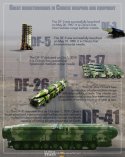With the reusable CZ-9 concept, I think the national space team is moving toward reusable liquid-fuel rockets. I can see a future where a fleet of reusable liquid fuel rockets is used in combination with solid fuel rockets for Chinese space launches.
Suppose a solid fuel ICBM has a 10 years operational lifespan, a fleet of 500 ICBMs will retire 50 rocket engines plus fuel each year. China does around 50 launches each year now. But the number will increase with the incoming national satellite Internet constellation. Depending on maintenance costs and interests rate, it could be surprisingly affordable.
Suppose a solid fuel ICBM has a 10 years operational lifespan, a fleet of 500 ICBMs will retire 50 rocket engines plus fuel each year. China does around 50 launches each year now. But the number will increase with the incoming national satellite Internet constellation. Depending on maintenance costs and interests rate, it could be surprisingly affordable.

